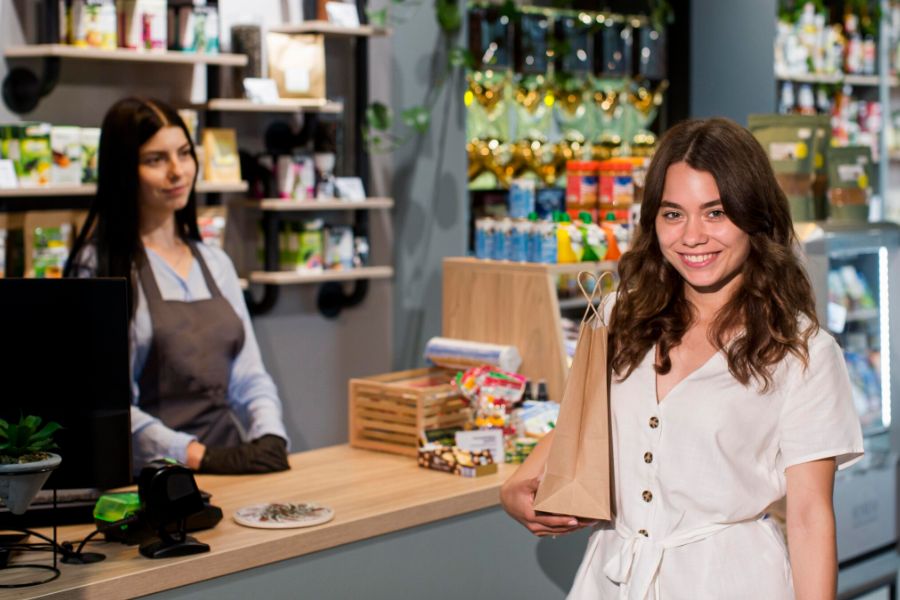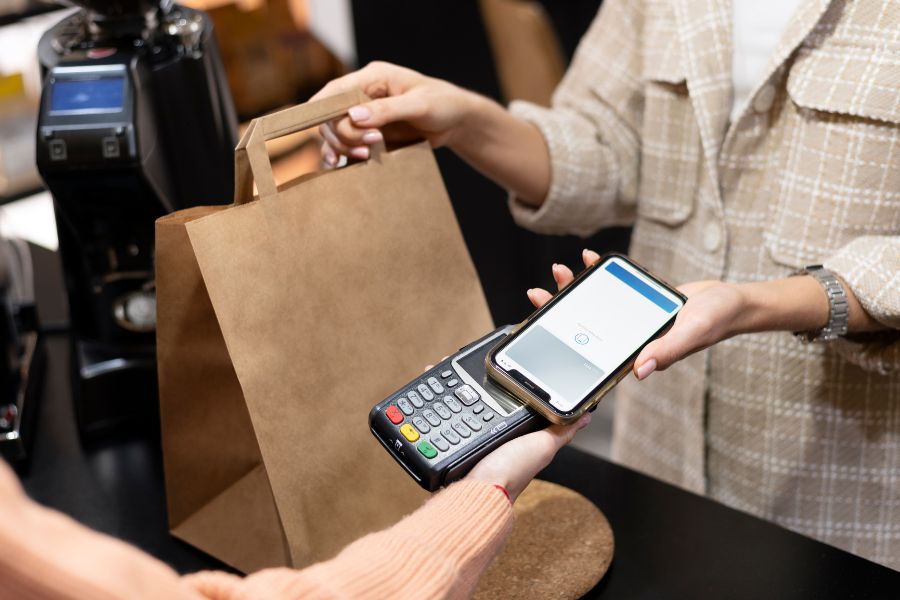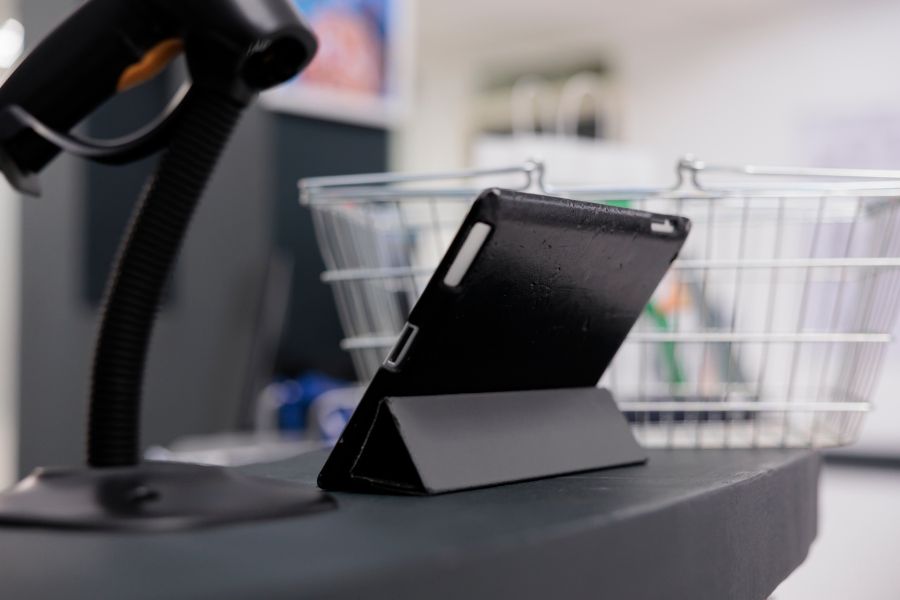Retail as a Service (RaaS) represents a transformative approach in the evolving commerce landscape, merging traditional retail practices with innovative service models and technology. This paradigm shift enables businesses to offer more personalized and efficient shopping experiences, streamlining operations and integrating advanced technologies such as AI and IoT. RaaS revolutionizes how products are sold, and services are delivered and significantly enhances customer interaction and satisfaction. As we delve deeper into this concept, we will explore its components, beneficiaries, and the critical role of store assistants in enriching the consumer experience.
What is Retail as a Service?
Retail as a Service (RaaS) is a modern adaptation of traditional retail. It focuses on a collaborative environment where multiple businesses showcase their products in a shared space. Unlike the conventional retail model, which emphasizes volume, RaaS prioritizes a curated selection of merchandise, placing a greater emphasis on retail storytelling. This approach transforms the physical layout and elevates the role of employees, who become key storytellers and ambassadors of the brand message.
This model leverages the power of narrative to engage customers, creating a more immersive shopping experience that resonates personally. It is particularly effective for online businesses that have witnessed growth and are looking to expand into physical retail without losing the essence of their brand. Through RaaS, these businesses can effectively scale, maintaining the intimate customer connections formed online while reaching new audiences.
Key Components of Retail as a Service
Retail as a Service intertwines several critical components that transcend traditional retail boundaries to create a dynamic and interconnected shopping ecosystem. These core elements are essential for the successful implementation and operation of a RaaS model:
- Technology integration
Technology is the backbone of RaaS, enabling seamless interactions between consumers, products, and retail spaces. From digital signage that provides interactive product information to sophisticated inventory management systems that synchronize online and in-store stock levels, technology facilitates a more connected and efficient retail experience. Additionally, the use of AI and data analytics helps personalize customer interactions and predict shopping trends.
- Inventory and logistics management
Efficient inventory and logistics are vital in a RaaS setup to ensure that the limited physical space is used optimally. This involves using just-in-time inventory systems and real-time data to manage stock levels, reduce overheads, and ensure that the most relevant products are available to customers. This strategic management not only maximizes space but also enhances the shopping experience by keeping the offerings fresh and aligned with consumer demand.
- Customer experience and personalization
At the heart of RaaS is a commitment to elevating the customer experience. This is achieved through personalized interactions, curated product selections, and engaging retail environments catering to consumer preferences and behaviors. Personalization can range from customized product recommendations to tailor-made marketing messages designed to create a more engaging and satisfying shopping experience.
- Collaborative operational model
RaaS often involves a collaboration between various retailers and service providers within a single space. This shared environment encourages a symbiotic relationship where businesses can benefit from shared resources, such as staffing, technology, and retail space, leading to reduced costs and enhanced customer services.
- Sustainability practices
With an increasing consumer focus on environmental impact, RaaS models are integrating sustainability into their core operations. This can include using eco-friendly materials in the setup, promoting upcycled or sustainably sourced products, and implementing energy-efficient technologies. These practices appeal to environmentally conscious consumers and contribute to a more sustainable business model.
These components are integral to the Retail as a Service model, each playing a unique role in transforming traditional retail into a more adaptive, technology-driven, and customer-focused industry.
Beneficiaries of Retail as a Service
Retail as a Serviceis a versatile model that benefits a diverse array of stakeholders in the retail ecosystem.
1. Small and Medium-sized Enterprises (SMEs)
SMEs stand to gain significantly from the RaaS model.
With lower upfront costs compared to traditional retail setups, SMEs can access high-quality retail spaces without the heavy investment typically required for prime locations and store fit-outs. This accessibility allows them to test products in physical spaces, gain direct customer feedback, and increase brand visibility. Moreover, shared resources in a RaaS environment, such as staffing and technology, can further reduce operational costs and complexity.
2. Large corporations
For larger corporations, RaaS offers a flexible platform to launch new products, explore different markets, or experiment with innovative retail concepts without committing to long-term leases or extensive resource allocation.
This model provides an agile environment to respond to market trends and consumer preferences quickly. Additionally, corporations can leverage RaaS to enhance their brand presence and engage with customers in more personalized and experiential ways.
3. Consumers
Consumers benefit immensely from the RaaS model through a more dynamic and engaging shopping experience.
The focus on curated product selections and enhanced customer service ensures that consumers receive personalized attention and access to unique products they might not find in conventional retail settings. The integration of technology further enriches the shopping experience, offering convenience and customization at every touchpoint.
The Importance of the Store Assistant
In the Retail as a Service model, the role of store assistants is transformative, extending beyond traditional sales and customer service roles to become central to the retail experience.
1. Brand ambassadors
Store assistants serve as the face of the brand within the retail environment, expertly communicating the brand’s story and values. This direct interaction fosters a deeper emotional connection between the customer and the brand, enhancing customer loyalty and engagement.
2. Personalized customer service
Leveraging technology and data analytics, store assistants can deliver exceptionally personalized service. They have access to tools that provide insights into customer preferences and previous interactions, enabling them to tailor recommendations and enhance the shopping experience. This level of personalization not only improves customer satisfaction but also drives sales.
3. Enhancing POS interactions with ConnectPOS
A crucial tool at the disposal of store assistants is the Point of Sale (POS) system, which is vital for processing transactions efficiently and managing customer interactions. ConnectPOS, a leading POS solution, integrates seamlessly into the RaaS model, offering features like real-time inventory tracking, customer management, and sales reporting. This integration empowers store assistants to provide quick, accurate service and a smooth checkout experience, further elevating customer satisfaction.
4. Operational efficiency
Store assistants are instrumental in maintaining the operational efficiency of the store. They manage daily tasks such as inventory control, store layout adjustments, and ensuring the retail space is welcoming and well-organized. Their efficiency directly impacts the overall functionality and customer perception of the store.
5. Feedback loop
Directly interacting with customers, store assistants are in a prime position to gather important feedback. They can easily identify trending products, customer preferences, and areas for improvement based on real-time observations and interactions, which are invaluable for adapting business strategies.
6. Crisis management and problem solving
Store assistants often handle unexpected challenges, from addressing customer complaints to resolving inventory issues. Their ability to manage these situations effectively is crucial for maintaining the integrity and reputation of the brand.
7. Driving technological engagement
In a technology-driven retail environment, store assistants help customers navigate and utilize digital tools, enhancing the shopping experience. Whether it’s through demonstrating interactive displays or assisting with digital product catalogs, their role is crucial in making technology accessible and useful to customers.
Store assistants are indispensable in the RaaS environment, where their diverse roles—from enhancing customer interactions with personalized services to efficiently using sophisticated tools like ConnectPOS—define much of the customer experience and operational success.

Challenges and Considerations in Retail as a Service
Retail as a Service has reshaped the retail landscape by offering flexibility and enhanced customer experiences. However, this innovative model comes with its own challenges and considerations that businesses must address to ensure success.
1. Integration of technology
The heavy reliance on technology in RaaS can be a double-edged sword. While technology facilitates improved customer experiences and operational efficiencies, integrating and maintaining advanced systems can be complex and costly. Businesses must invest in reliable technology and ensure continuous updates and support. Moreover, staff must be trained to use these systems proficiently, which can be time-consuming and expensive.
2. Data privacy and security
With RaaS models utilizing significant amounts of consumer data to enhance personalization and service delivery, there is an increased risk of data breaches and privacy issues. Companies must prioritize robust cybersecurity measures and adhere to data protection regulations to protect customer information and maintain trust.
3. Supply chain complexity
RaaS often involves managing a more complex supply chain due to the variety of products and services offered in a shared space. This complexity can lead to logistical challenges, inventory discrepancies, and difficulties in supply chain coordination. Effective supply chain management systems and real-time data analytics are essential to navigate these complexities.
4. Customer experience consistency
Maintaining a consistent customer experience across various service providers in a RaaS setup can be challenging. Each brand may have different standards and processes, which can confuse customers and dilute the overall service quality. Establishing clear standards and regular training for all participating vendors and their staff is crucial.
5. Scalability and flexibility
While RaaS offers scalability and flexibility, scaling this model while maintaining quality and operational efficiency can be challenging. As businesses expand, they need to ensure that new locations or services integrate seamlessly with existing operations and continue to meet customer expectations. This requires strategic planning, scalable systems, and flexible business processes.
Addressing these challenges requires careful planning, strategic investment in technology, and a continuous focus on quality and customer satisfaction.
Takeaways
Embracing Retail as a Service allows businesses to enhance customer engagement through advanced technology and shared retail spaces. By addressing the challenges of Retail as a Service implementation, companies can provide personalized and efficient shopping experiences that meet modern consumer expectations. The strategic adoption of RaaS can lead to increased customer satisfaction and significant business growth, making it a worthwhile consideration for any forward-thinking retail strategy.
Enhance your Retail as a Service model with ConnectPOS, which offers robust, seamless point-of-sale solutions that streamline operations and improve customer interactions. For a tailored demonstration of how ConnectPOS can elevate your retail strategy, contact us today!
ConnectPOS is a all-in-one point of sale solution tailored to meet your eCommerce POS needs, streamline business operations, boost sales, and enhance customer experience in diverse industries. We offer custom POS with features, pricing, and plans to suit your unique business requirements.




